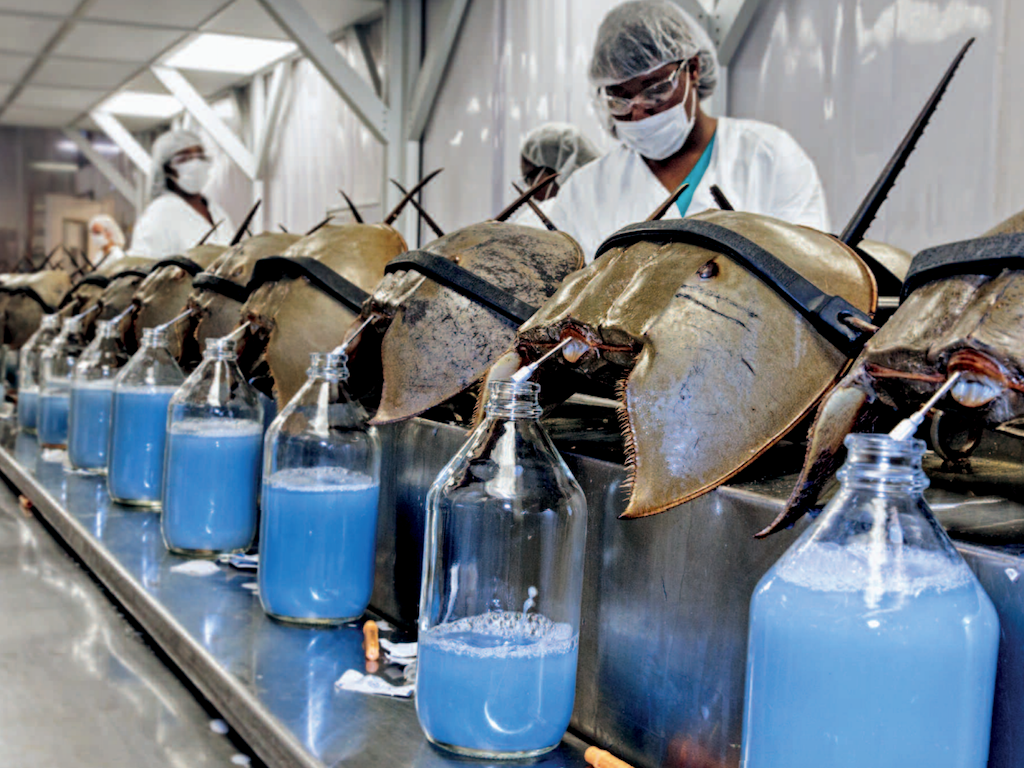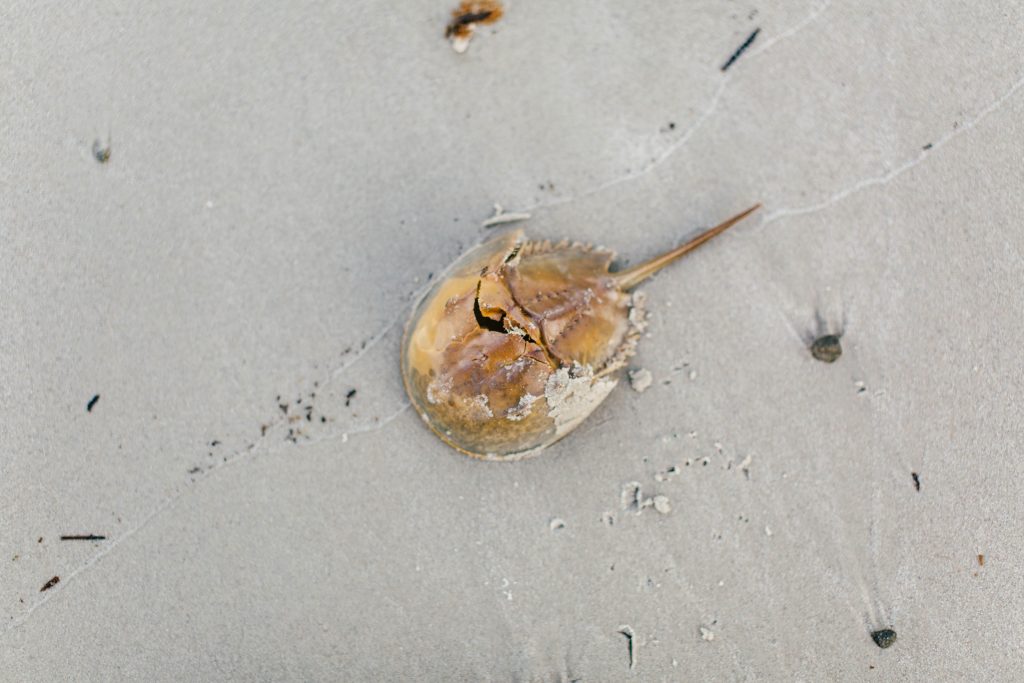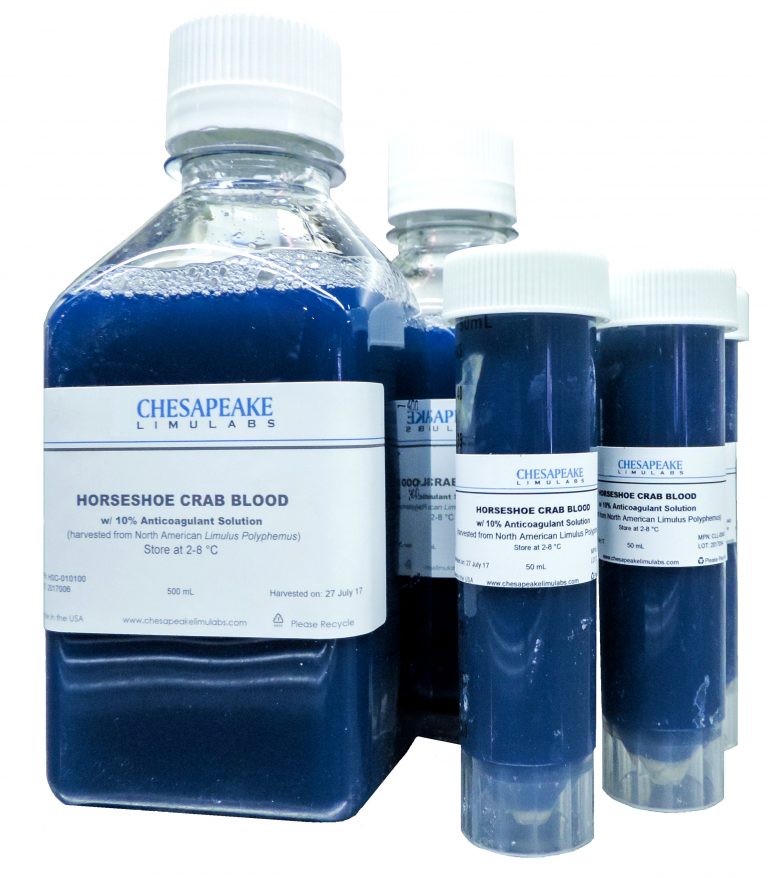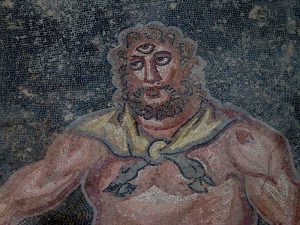A noble animal? The blue blood Limulus
3 min read
It is not of royal lineage, but is essential to the pharmaceutical industry. Meet the limulus, an animal… Full of surprises.
Limulus polyphemus, or simply limulo, is more commonly known as Atlantic horseshoe crab, or horseshoe crab. However, this armored arthropod does not resemble a crab at all.

The limulus is a real living fossil: the first specimens date back to about 450 million years ago.
It has been considered a crustacean for years but, today it is classified as a marine arachnid, it is mainly found along the coasts of North America.
But what is its peculiarity?
The limulus is a blue blooded animal.
No, not metaphorically but literally. Its blood is a wonderful blue color, because of copper.
This blood, or more correctly hemolymph, also has an incredible capacity that is part of the animal’s defense mechanisms: it is able to coagulate because of pyrogens.
WHAT ARE PYROGENS?
Pyrogens are very powerful toxic substances capable of causing strong thermal rises once in circulation in the body. This already happens at very low doses, to the extent of a few nanograms (to be clear, 10-9 grams).
It was Florence Seibert, a very successful American scientist (well known for her studies on tuberculosis test), who noticed in 1923 that patients who received injections often developed severe fever, often fatal. She realized that the danger was due precisely to the presence of pyrogens.
The pyrogens can be of microbial origin and not: in the first case they originate from the metabolism or breakdown of the same microorganisms, mainly Gram. Of all, endotoxins are the most important in the pharmaceutical field.
If they enter the blood or cerebrospinal fluid, they can cause excessive febrile reactions, neutropenia, leukocytosis, changes in pressure and vascular permeability, up to shock and death.
Not a small thing is it?
For this reason, pharmaceutical preparations such as injectable preparations must not only be sterile (and respond to many other rigorous characteristics) but also non-pyrogenic.
So let’s go back to the protagonist of our story: why does limulus have this importance?
THE LAL TEST
Given the ability of the hemolymph to coagulate in the presence of pyrogens, the blood cells of the limulus, called amebocytes, are collected. An aqueous extract called Limulus Amebocyte Lysate (LAL) is then produced.
What is called LAL test is then carried out: our drug by injection is put in contact with the LAL.
If endotoxins are present, the hemolymph coagulates in a dose-dependent manner, so the higher the concentration of toxins, the faster the blood will clot.
Obviously, if the blood coagulates and we are therefore in the presence of pyrogenic substances, the preparation is immediately discarded.
It is necessary? Yes, this test is of paramount importance for patient safety. Since the use of pyrogen mortality that followed the injections, previously very high, it has been greatly reduced, to the point of practically eliminating itself.
And the health of the limulus? Its importance in the biomedical and pharmaceutical sector is well known around the world. The limulus is protected for this reason. Once fished, its hemolymph is withdrawn, then it is put back into the water and marked not to be subjected to this stress again. Mortality after this test is also not high.
However, many are striving to have an in vitro test with the same effectiveness and validity. Recent studies are trying to replace limulus with a synthetic alternative. Good results have been obtained but for now unfortunately we still do not have the possibility to eliminate the use of limulus.
To this day this animal continues to save many human lives.
And if you are interested in the relationship between animals and medicine, here I will tell you about bats carrying pandemics and deadly fish.
Sources:
https://www.ncbi.nlm.nih.gov/pmc/articles/PMC6200278/
https://pubmed.ncbi.nlm.nih.gov/9072761/
Cover image taken from PBS Nature documentary Crash
Link source https://www.antropia.it/un-animale-nobile-il-limulo-dal-sangue-blu/

Globetrotter e multipod classe ’90, sono laureata in Lingue e Letterature straniere e coltivo una grande passione per gli scrittori ispanoamericani e angloamericani. Da che ho ricordi scrivo e ho unito la predisposizione alla scrittura all’interesse per lo sport collaborando dal 2009 al 2020 come redattore su testate giornalistiche online e cartacee a tema calcio. Pratico tiro con l’arco e boxe, ho scritto un libro e ho deciso di dedicarmi attivamente all’inclusione in ogni sua declinazione e accezione.







